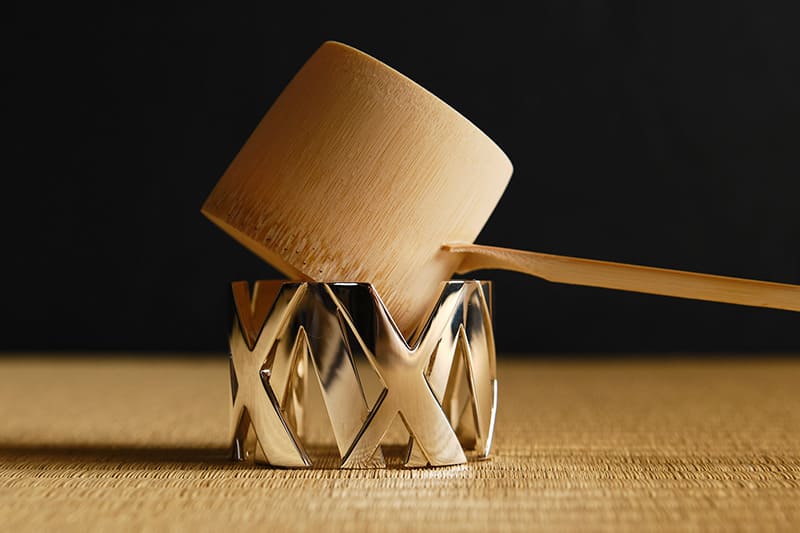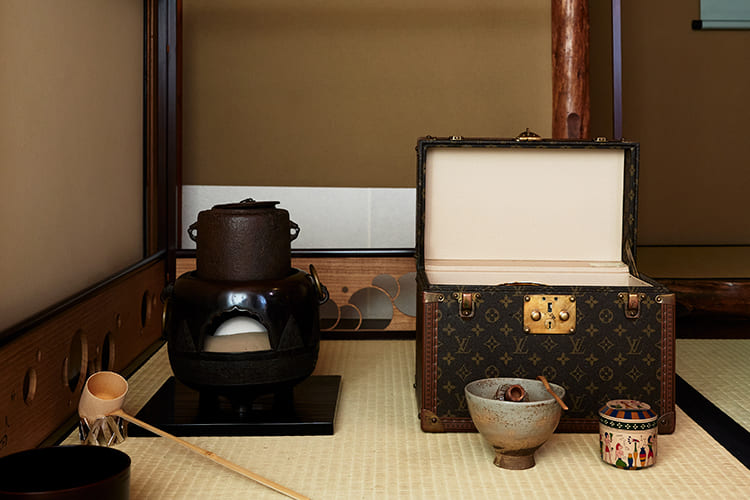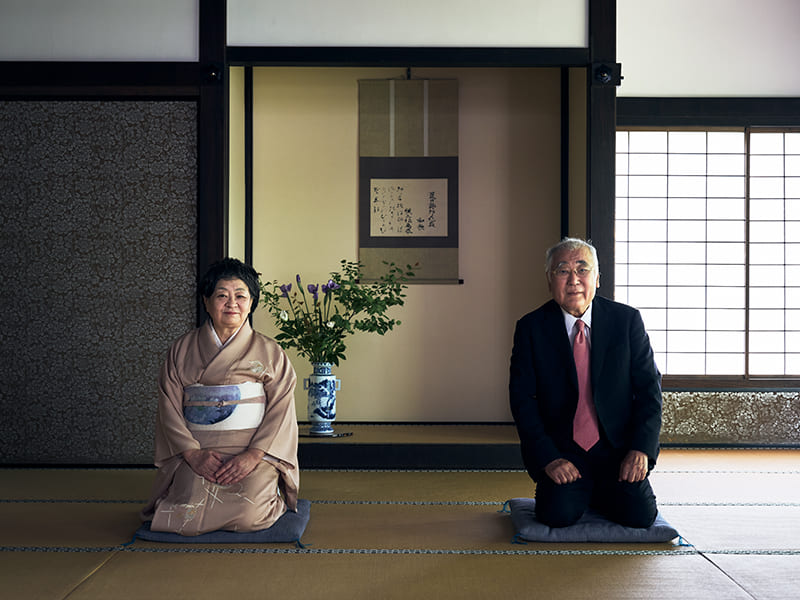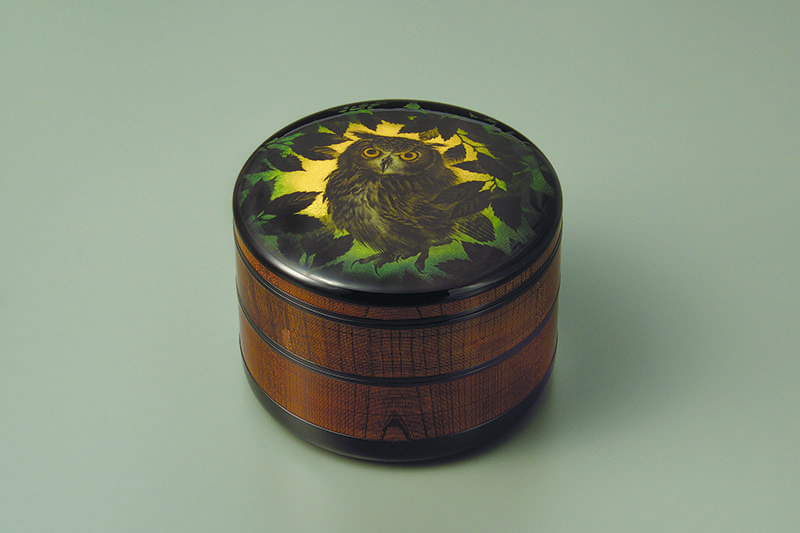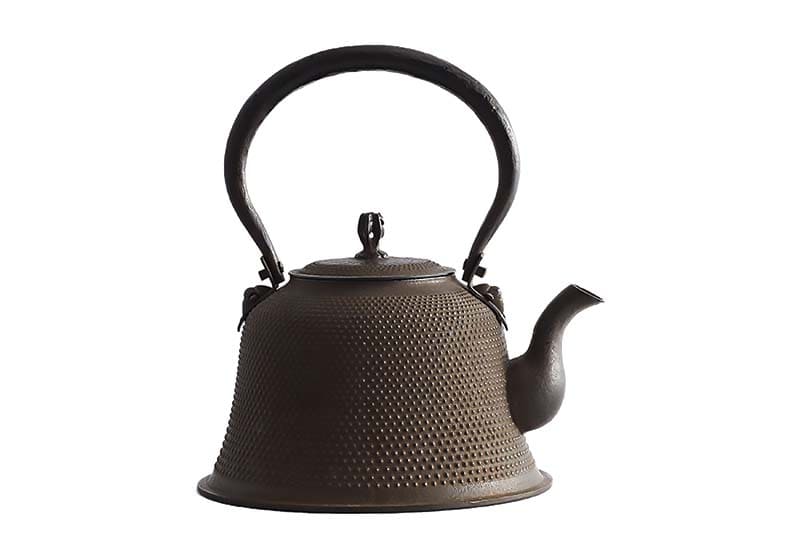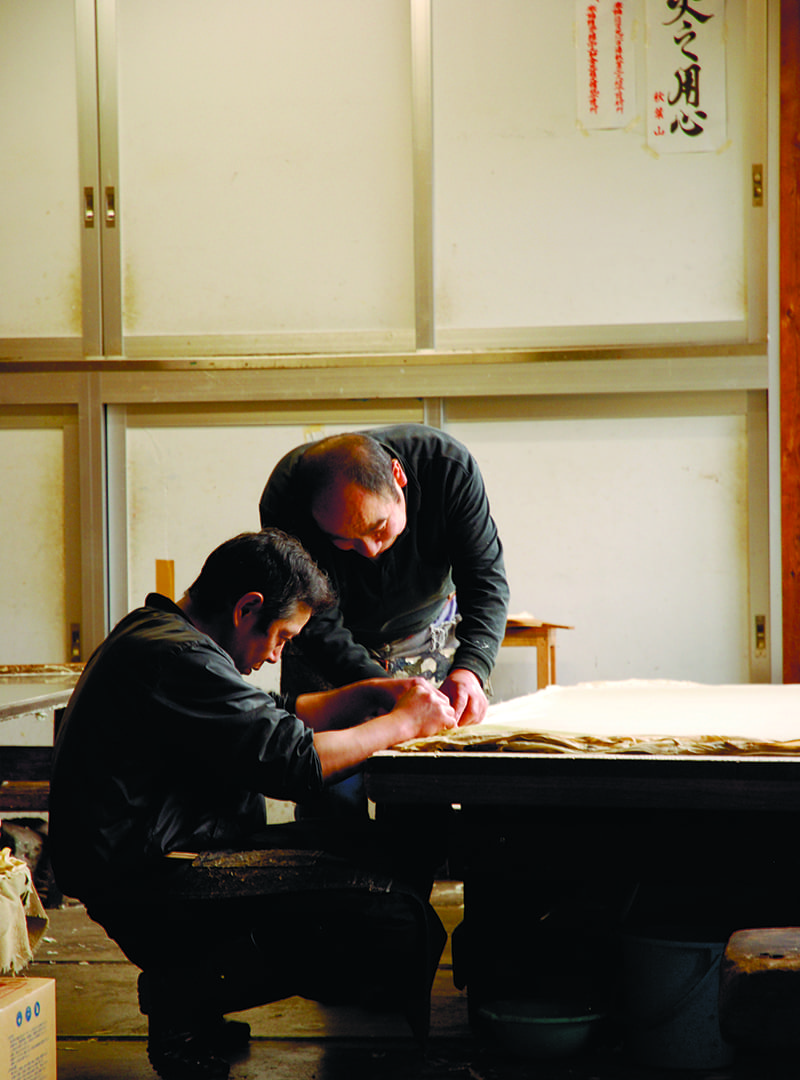September 22, 2022
Hosokawa family’s 500-year cultural labor of love
INTERVIEW
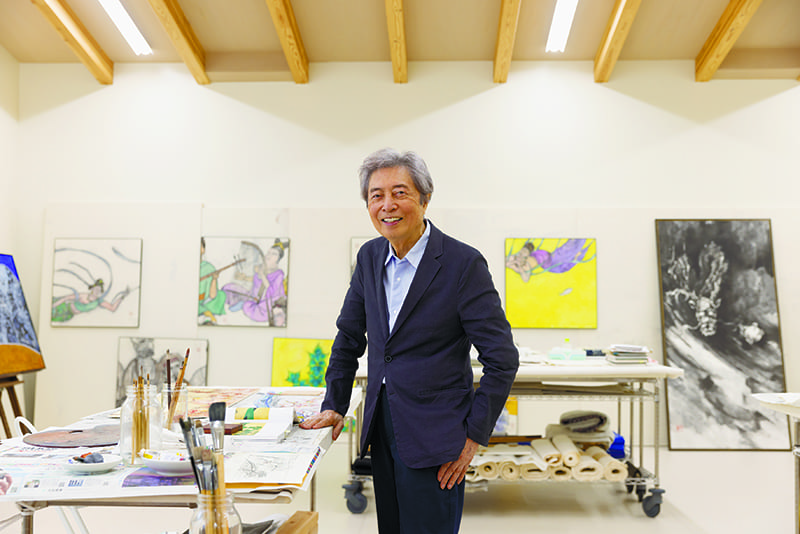
MORIHIRO HOSOKAWA
Born in Tokyo in 1938. After working as a reporter at the Asahi Shimbun, Hosokawa served as a member of the House of Representatives, the governor of Kumamoto Prefecture, the leader of the Japan New Party and prime minister. After retiring from politics, he has made pottery, calligraphy, ink paintings and lacquerware at Futoan, his private residence in Yugawara, Kanagawa Prefecture. He is the president of the Eisei Bunko Foundation. He held a solo exhibition at the Pola Museum Annex as a charity event to support Ukraine. From Sept. 21 to 24, 150 of his works, including lacquer paintings, are being exhibited at the Tokyo Bijutsu Club before they are auctioned. Proceeds will be donated to UNHCR. His publications include “Futoan Nichijo” (“Everyday Life at Futoan,” published by Shogakukan), “Seiko Udoku” (from a phrase meaning “working in the field in fine weather and reading at home when it rains,” published by Shinchosha), and “Kyochu no Sansui” (“The Landscape in My Heart,” published by Seiso Shobo).
The Hosokawa family can be traced back to the Muromachi Period (16th century) and Hosokawa Yusai, a faithful samurai who served both the shogun and the warlord Oda Nobunaga and was well known as a skilled warrior and also a man of letters. Many generations later, the family is now led by the multitalented Morihiro Hosokawa. After serving as governor of Kumamoto Prefecture and then as the 79th prime minister of Japan, Hosokawa retired from politics in 1998 at the age of 60. Since then, he has served as president of the Eisei Bunko Foundation, which preserves and displays approximately 94,000 items of art and historical materials that have been handed down within the Hosokawa family, including eight designated National Treasures and 33 Important Cultural Properties. He has also become an accomplished potter, calligrapher and painter in his own right.
The second leader of the family, Hosokawa Tadaoki, was also a successful military commander and at the same time a disciple of Sen no Rikyu, who established the art of the Japanese tea ceremony. A taste for the tea ceremony also has rubbed off on Morihiro Hosokawa, who is well known for making ceramics such as tea bowls. Particularly interesting is that Hosokawa now also works with lacquer — but not to make the usual lacquerware items with decorative maki-e, in which metal powder is sprinkled onto the surface, or embedded mother-of-pearl. Rather, he uses lacquer as a material to make paintings with.
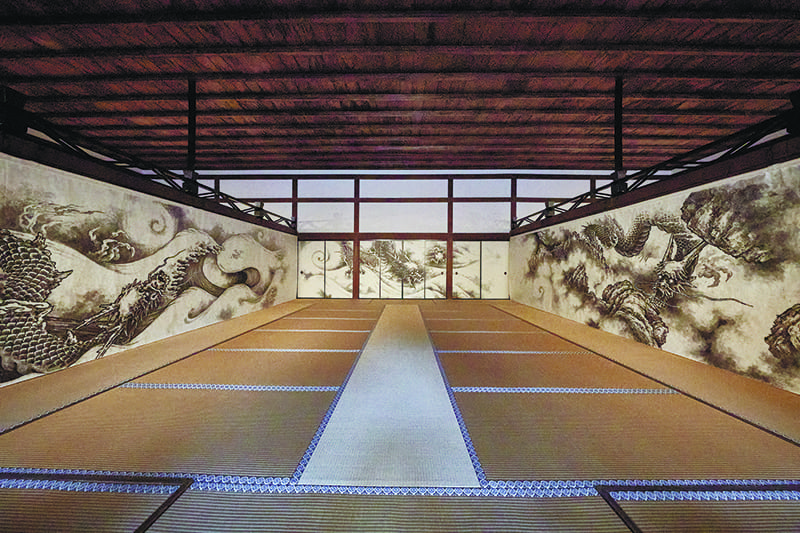
“Originally, I started doing this while I was doing pottery,” he said. “When I was firing my tea bowls in the workshop, I would inevitably end up with cracks or chipped rims from the kiln. I happened to know a botany teacher who was knowledgeable about lacquer, and he also made lacquerware himself. He taught me where to get lacquer, what kinds of lacquer there are and how to use them. Until that time, I had no choice but to either hand my broken tea bowls over to a kintsugi craftsperson for repair,” using lacquer mixed with gold powder, “or to throw them away. I am now able to revive them myself.”
As Hosokawa became accustomed to using lacquer, it occurred to him that he could paint with it. It is known that the famous miniature Tamamushi Shrine, a National Treasure dating from the Asuka Period (530-710) that is held at Horyuji temple, is decorated with lacquer paintings depicting the life of Buddha. However, no living craftspeople currently practice the technique. In Hosokawa’s works, sometimes the lacquer is scraped off, and sometimes lines are carved in it as though with a nail. To add color, he sprinkles in mineral pigments used in nihonga painting or gold and silver powder before the lacquer can dry. He explained with a smile that through repeated trial and error, he has become proficient at using the material to make pictures.
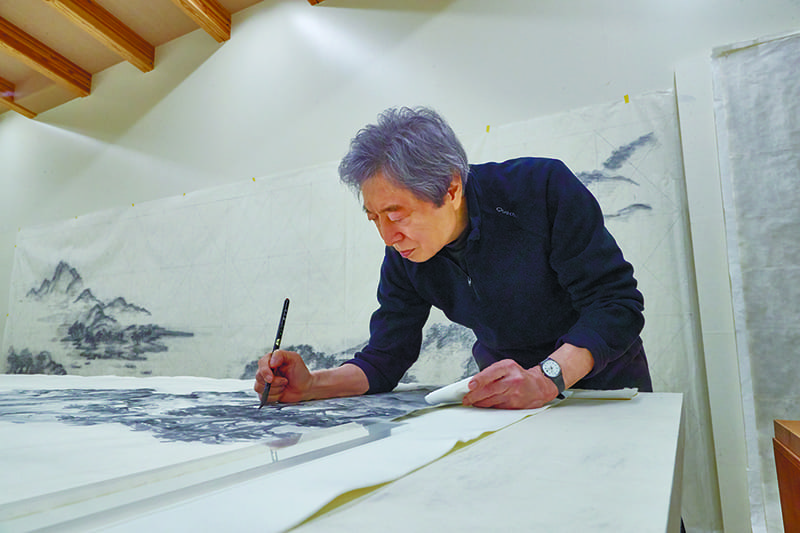
“In short, it is similar to the technique of maki-e, in which gold dust is sprinkled on a lacquered surface,” he said. “The only difference is that the base is a canvas rather than a bowl. My favorite motif at the moment is the traditional Chinese one of grass and insects.”
When Hosokawa was a child, he would use lacquerware tables and bowls that all bore the Hosokawa family crest, known as kuyomon, which features nine stars. The Eisei Bunko Museum includes harnesses and a masterpiece of lacquer work, the “shigure raden saddle,” which is designated as a National Treasure. Hosokawa enjoys creating his own work freely against the background of such tradition, but he still is deeply concerned about whether there will be younger craftspeople to inherit these techniques, materials and tools in the future.
“I heard that it is difficult to make maki-e brushes these days,” he said. “The brushes used for making fine lines were originally made from the hairs that grew along the spines of mice that could be found in wooden ships and storehouses, but these days, because the mice eat so well they have become larger and so their backs rub against pipes in the sewers, meaning their strong, straight back hairs can no longer be used. Until about 20 years ago, there was a person who kept mice in an abandoned boat in a reed field on the shores of Lake Biwa, but they stopped doing that, and now mouse hair has been replaced with that of other animals. And these are just the difficulties we face with sourcing one single type of brush, so in order to pass down the techniques and tools for all our traditional crafts, and not just maki-e, the effort required is daunting. My father served as the chairman of the Traditional Crafts Association, and when I was governor, I got to see the state of traditional crafts in Kumamoto Prefecture, such as Higo zogan [Higo inlay metalwork], and I really became concerned by this.”
In recent years, Hosokawa has frequently been asked to create paintings on fusuma sliding doors for temples. In Kenninji temple, he has made 24 fusuma paintings depicting the “Eight Views of Xiaoxi,” and in Ryoanji temple, he has made 32 on the theme of “Clouds and Dragons.” Naturally, to make that many paintings, he needs a good supply of the washi paper he likes. While he said he has the paper made for him, he is also active in trying to preserve the culture of making high-quality washi paper in Japan, and so he serves as a councilor of the World Paper Heritage Support Foundation Kamimori, which cultivates kozo (paper mulberry) and mitsumata (Oriental paper bush) and also conducts and publishes research on the topic.
In this way, Hosokawa’s efforts never end with just appreciating, using and making traditional crafts. His work comprises all elements of the process, including preservation, teaching and passing on knowledge for future generations. And perhaps his motivation stems from the knowledge that his ancestors have guarded over this culture for 500 years already.
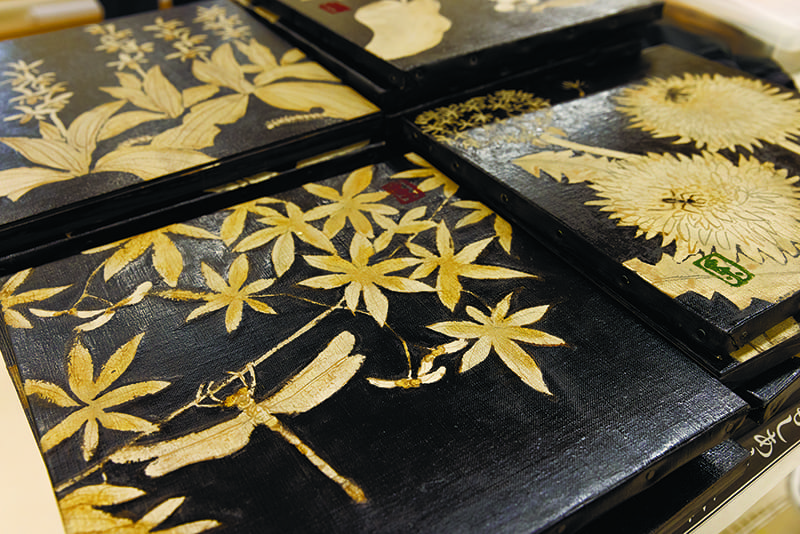
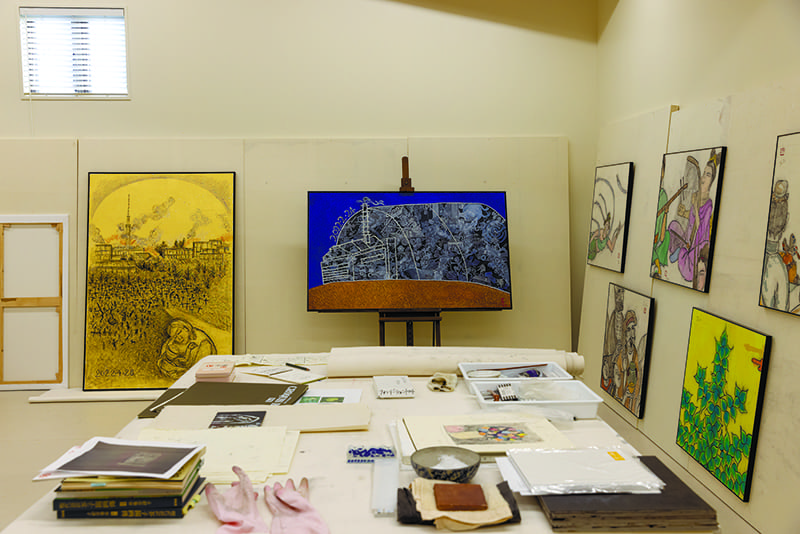
文化を守り、創る。伝統工芸と細川家の500年。
室町時代に優れた武人、また当代一の文人として名を馳せた細川幽斎を初代とする細川家。文武両道を旨とする当主はいま、細川護煕が担う。熊本県知事を経て内閣総理大臣を務め、60歳を機に政界を引退。細川家に受け継がれた文化財を展示する美術館の理事長を務める傍ら、器や書、絵画の作家としても高い評価を受ける。
細川は自ら焼いた陶磁器の割れや欠けを漆で補修しているが、その漆を素材に絵を描き始めた。京都の古寺からの依頼を受け、何十面もの襖に水墨画を描く仕事も多い。こうした伝統的な工芸、美術の制作に携わっていると、その道具や素材が危機に瀕していることがわかる、と細川は言う。「細い線を描くための筆は鼠の毛を使っていたが、近年は栄養過多で鼠が大型化、毛先を筆に使うことができないそうです」。水墨画に使う和紙は、原材料の栽培から支援している。伝統工芸を鑑賞し、使い、作り、さらに守り、育て、未来へ繋げるまで全ての過程に関わっているのは、500年以上を文化の守り手としてあり続けてきた、歴史ゆえなのかもしれない。
Return to Sustainable Japan Magazine Vol. 16 article list page

